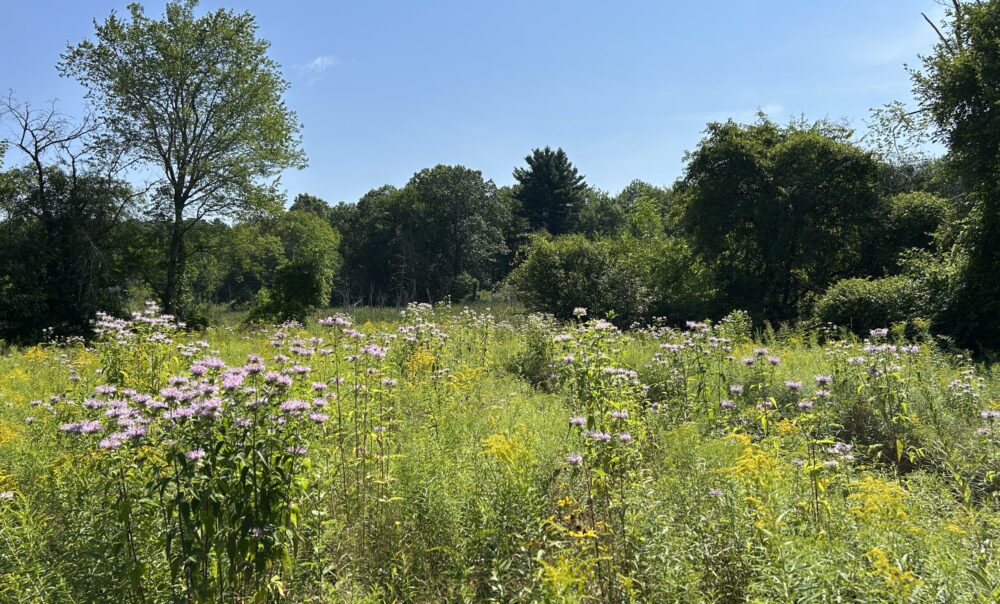Blackman Land given to GCT by Arthur and Camilla Blackman in 1984
Nine acres of meadows, orchard, and woods off Indian Hill Road. A trail provides access to Indian Hill from the south and connects with the Bates Land. Its high, open character provides a panorama of agricultural and wooded areas.
A Winter’s Tale: Touring Groton’s Newest Conservation Gift by Tresa Jones
This story first appeared in 2001 in the GCT newsletter
On January 28, 2001 I joined a dozen Groton Conservation Trust members to hike, ski, and snowshoe the 48 acre gift of land recently received by the Trust. The rolling and jagged landscape includes at the western end an open meadow sloping down to wetlands evidencing beaver activity. Further in on Nutting Road there’s an upland vernal pool and woodlands with a mix of deciduous and coniferous trees. A thick stand of mature hemlock, a rare sight this far south, covers a north-facing ravine, accompanied by an understory of mountain laurel.
Arthur Blackman, who with his wife Camilla recently donated the land, explained that “as you hike this area, you’ll find no cellar holes, no signs of human habitation it’s wonderful to think that the natural continuum of this land, interrupted by a century or two of lumbering, will now go on, hundreds of years into the future, unspoiled by human intervention. A key feature of this property is that it links two adjacent conservation areas, another example of how a few scattered acres given at different times can eventually become linked and end up creating a significant protected corridor… for wildlife and native plants, as well as an opportunity for us humans to roam and commune in a natural habitat”.
Leaving the track to bushwhack into a downhill cluster of red oak and hemlock, we then visited the “Forest Bells” installed in 1995 by local artist Paul Matisse. In talking later to Matisse about this piece he explained “they are made of aluminum to ensure that they will not chime so loudly as to offend nature. A forest is so wonderful in and of itself that one can only add to it with humility. These bells were designed to be quiet and unobtrusive, and yet satisfy a desire to experience music in a totally natural landscape. Even a single musical sound is such an amazing contrast to the sounds of nature, which are so varied and seemingly haphazard”. He also pointed out “the bells are positioned in a curious way, so that the person ringing the bell doesn’t hear it as clearly as those standing to the side, which is so often the case in human relations. “The six bells are actually a gift within a gift. They were the first public donation of the local Artists’ Valentine project. When they were installed, in anticipation of the now-completed land gift, the Blackmans encouraged the public to enjoy them as they were intended, a serendipitous treat in their forest hike.
In talking to Arthur after the hike he said “by our gift we’re continuing what other townspeople have been doing, expanding the pattern of conservation lands while we still can. Groton is at a critical moment in its history. With land being gobbled up for houses, municipal use, commercial expansion. Discovering the Forest Bells in the next few years it will all be decided. What we don’t preserve now will be gone forever. As the town plans to celebrate its 350th anniversary we can’t imagine the changes that will occur in the next decade much less three centuries. But one thing we can make certain, these lands set aside in conservation today will be here for all life forms, always.”

